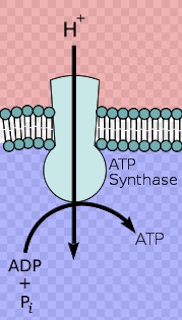Membrane Proteins
Thursday 16 September 2010
Significance of polar & nonpolar amino acids
Yesterday, as I was discussing the significance of polar and nonpolar amino acids in Proteins, I drew the classic diagram of a channel protein in a membrane on the whiteboard. 
When I asked the students where the polar amino acids would be found in the protein, one student gave the idea of polar amino acids on the extremities of the proteins, in contact with the watery environments inside and outside the cell. Another student suggested that nonpolar amino acids would be found along the length of the protein near the nonpolar tails of the phospholipid bilayer. Okay, so my students had done their homework! Though no one could get the idea of the channel protein for polar solutes. After a short discussion, a student said she did not understand the diagram. Then I had this spontaneous idea!
There were 19 students in my 1st year Biology HL class- 6 boys and 13 girls. I asked 6 girls to come up front in two groups of 3 -" You are polar amino acids at the ends of the protein." The six boys were asked to come up too and form two rows of between the two groups of the girls. "You guys are the nonpolar amino acids in the protein." Hold out your arms in front of you, these are your "nonpolar R" groups. One other girl was nominated as a polar solute. "Dare you pass through the channel?", I asked her. She looked down the row of boys with their hands and arms sticking straight out in front of them. "NO WAY!", she said. Okay, so now 6 more girls, as polar amino acids, came up to line the inside of the channel, covering the nonpolar amino acid boys. Now the polar solute girl glided easily through the channel! The student who did not grasp the diagram, now said she could understand what was going on.
I constantly look for ways to have the students act out the processes or structures in biology as a way to enwaken their comprehension. Check out the Photosynthesis ![]() page for more ideas.
page for more ideas.

